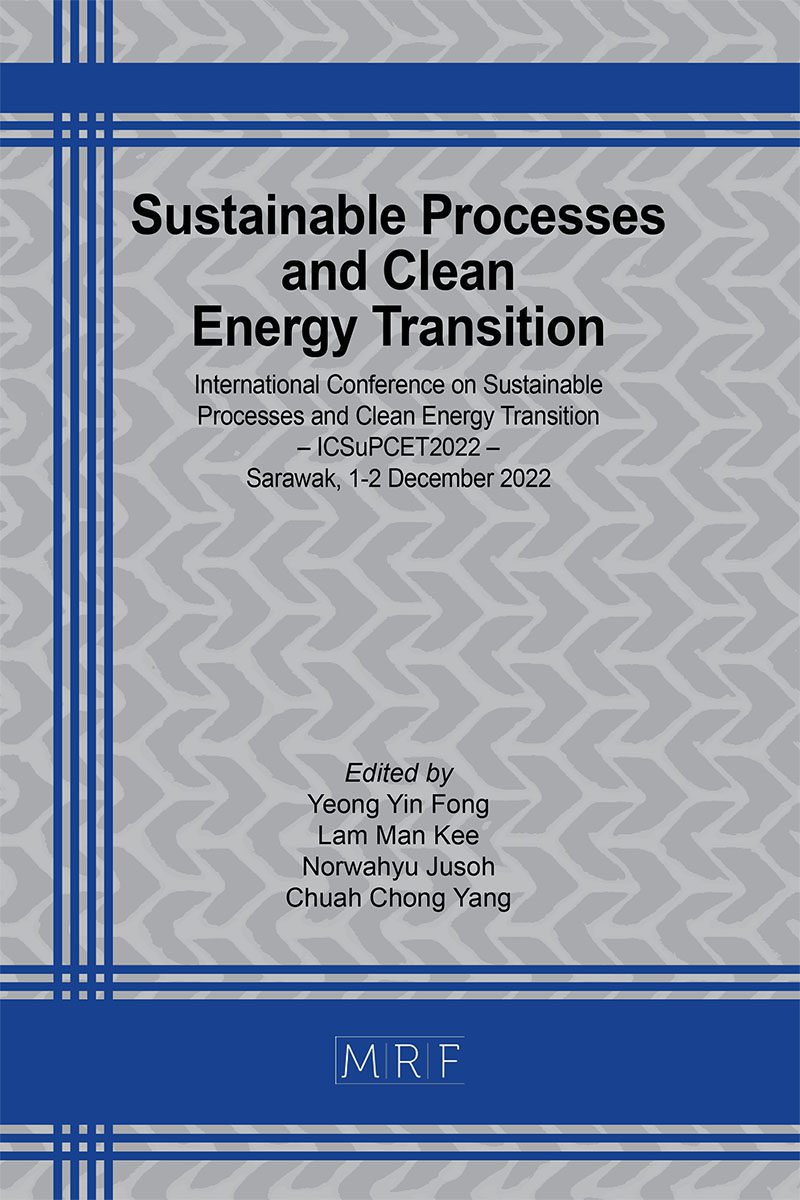The effect of fluoride based salt etching in the synthesis of Mxene
DINESH Rao Prakas Rao, DINESH Sivanesan, SITI Nur Azella Zaine
download PDFAbstract. Here we reported the effect of fluoride-based salt etching in the synthesis of Ti3C2 MXene by etching Ti3AlC2 MAX phase precursor. Lithium fluoride (LiF) and ammonium fluoride were the fluoride-based salts were chosen as an etching agent in this study. The optimum etchant concentration and etching temperature of the MAX phase were evaluated. The presence of aluminium etched was determined by using the Inducted Couple Plasma Optical Emission Spectrometry (ICP-OES). The initial concentration of aluminium in Ti3AlC2 precursor was estimated based on the data from Energy Dispersive X-Ray Analysis (EDX). The study shows that the optimum etchant concentration of LiF is 5M and NH4F is 3M. Room temperature is the optimum etching temperature due to the exothermic reaction of the process. Compared to LiF, NH4F is the preferred salt for in-situ HF fluoride-based salt etchant due to the capability of the salt to etch the maximum amount of Al at a low concentration of 3M within 24 hours at room temperature.
Keywords
Titanium Aluminium Carbide, MXene, Fluoride-Based Salt Etching, In-situ HF, Green Etching Process
Published online 5/20/2023, 7 pages
Copyright © 2023 by the author(s)
Published under license by Materials Research Forum LLC., Millersville PA, USA
Citation: DINESH Rao Prakas Rao, DINESH Sivanesan, SITI Nur Azella Zaine, The effect of fluoride based salt etching in the synthesis of Mxene, Materials Research Proceedings, Vol. 29, pp 59-65, 2023
DOI: https://doi.org/10.21741/9781644902516-8
The article was published as article 8 of the book Sustainable Processes and Clean Energy Transition
![]() Content from this work may be used under the terms of the Creative Commons Attribution 3.0 license. Any further distribution of this work must maintain attribution to the author(s) and the title of the work, journal citation and DOI.
Content from this work may be used under the terms of the Creative Commons Attribution 3.0 license. Any further distribution of this work must maintain attribution to the author(s) and the title of the work, journal citation and DOI.
References
[1] Alhabeb, M., Maleski, K., Anasori, B., Lelyukh, P., Clark, L., Sin, S., & Gogotsi, Y. Guidelines for Synthesis and Processing of Two-Dimensional Titanium Carbide (Ti3C2Tx MXene). Chemistry of Materials, 29(18) (2017) 7633- 7644. https://doi.org/10.1021/acs.chemmater.7b02847
[2] Liu, F., Zhou, A., Chen, J., Jia, J., Zhou, W., Wang, L., & Hu, Q. Preparation of Ti3C2 and Ti2C MXenes by fluoride salts etching and methane adsorptive properties. Applied Surface Science, 416 (2017) 781-789. https://doi.org/10.1016/j.apsusc.2017.04.239
[3] Y. Gao, L. Wang, Z. Li, A. Zhou, Q. Hu, X. Cao, Preparation of MXene-Cu2O nanocomposite and effect on thermal decomposition of ammonium perchlorate, Solid State Sci. 35 (2014) 62-64. https://doi.org/10.1016/j.solidstatesciences.2014.06.014
[4] F. Wang, C. Yang, C. Duan, D. Xiao, Y. Tang, J. Zhu, An organ-like titanium carbide material (MXene) with multilayer structure encapsulating hemoglobin for a mediator-free biosensor, J. Electrochem. Soc. 162 (2015) B16-B21. https://doi.org/10.1149/2.0371501jes
[5] M. Ghidiu, M.R. Lukatskaya, M.Q. Zhao, Y. Gogotsi, M.W. Barsoum, Conductive two- dimensional titanium carbide ‘clay’ with high volumetric capacitance, Nature 516 (2014) 78-81. https://doi.org/10.1038/nature13970
[6] D. Sun, M. Wang, Z. Li, G. Fan, L.-Z. Fan, A. Zhou, Two-dimensional Ti3C2 as anode material for Li-ion batteries, Electrochem. Commun. 47 (2014) 80-83. https://doi.org/10.1016/j.elecom.2014.07.026
[7] Natu, V., Pai, R., Sokol, M., Carey, M., Kalra, V., & Barsoum, M. W 2D Ti3C2Tz MXene Synthesized by Water-free Etching of Ti3Al2Cz in Polar Organic Solvents. Chem, 6(3) (2020) 616-630. https://doi.org/10.1016/j.chempr.2020.01.019
[8] M. Naguib, M. Kurtoglu, V. Presser, J. Lu, J. Niu, M. Heon, L. Hultman, Y.Gogotsi, M.W. Barsoum, Two-dimensional nanocrystals produced by exfoliation of Ti3AlC2, Adv. Mater. 23 (2011) 4248-4253. https://doi.org/10.1002/adma.201102306
[9] M. Naguib, R.R. Unocic, B.L. Armstrong, J. Nanda, Large-scale delamination of multi- layers transition metal carbides and carbonitrides ‘MXenes’, Dalton Trans. 44 (2015) 9353-9358. https://doi.org/10.1039/C5DT01247C
[10] Gediz, U., & Geyikçi, F. Kinetic Study on Copper Leaching in Electroplating Waste Sludge (EWS) with Ammonium Nitrate Solution (ANS). Kastamonu University Journal of Engineering and Sciences, 5(1) (2019) 1-15.
[11] Nikiforov, G. B., Roesky, H. W., & Koley, D. A survey of titanium fluoride complexes, their preparation, reactivity, and applications. Coordination Chemistry Reviews, 258-259 (2019) 16-57. https://doi.org/10.1016/j.ccr.2013.09.002































